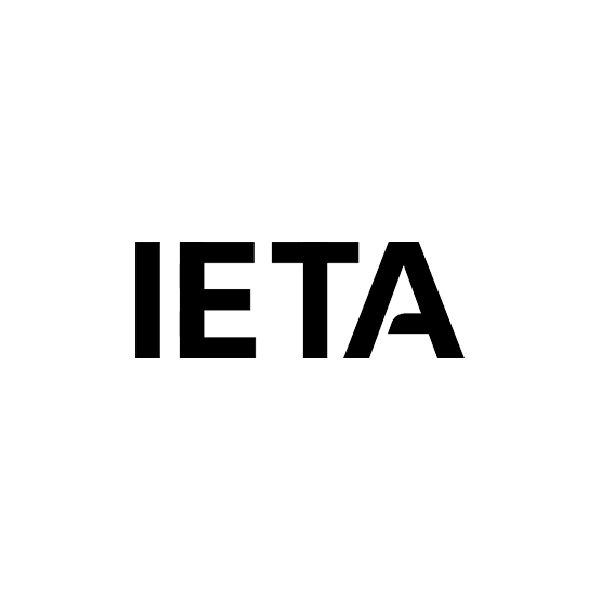It’s better when
it’s balanced.
This is what real corporate climate
leadership looks like.
Balancing your [carbon] books.
Reduce & Invest. A new strategic mantra for every business leader.
Reduce
Reduce your corporate emissions as fast and as far as possible. Rapid decarbonisation of your supply chain is critical and urgent…
Invest
…while simultaneously using the VCM to invest in climate solutions above and beyond your business – solutions which can help accelerate Global Net Zero.
It’s both. Equal and opposite
Emissions today balanced by investments today.
Using the VCM to ensure that those investments deliver high-quality and effective action.
The principle is simple – Balance your [carbon] books.
Like for like.
Equal and opposite.
Every tonne, every time.
Because if you pollute (and we all do) – you should pay.
It really is better when it’s balanced – better for the planet, and better for your business.
Balance
your
books.
Like for like.
Equal and opposite.
Every tonne, every time.
This is what real corporate climate leadership looks like.
Reductions AND Investments. In equal measure.
It’s one thing to commit to net zero in the future, another to take responsibility for your continued contribution to the problem – your emissions today, tomorrow and next year?
Shouldn’t you be accounting for those now, as you journey to your low-carbon future?
Our message is simple: every business should be balancing their [carbon] books. Emissions today balanced by investments today. Using the VCM to ensure that those investments deliver high-quality and effective action. Above & beyond your business.
VCM –
immediate, proven,
low-cost.
What if… there was an immediate, proven, low-cost way to alleviate the pressure on delivering corporate net zero targets – while you are busy decarbonising your business?
The Voluntary Carbon Market (VCM) provides a market mechanic for taking immediate action:
- A proven way to flow finance to effective solutions that are accelerating Global Net Zero.
- An effective way to use the mechanics of the market to deliver high-integrity, high-impact solutions for carbon, nature and the Global South.
- A financial instrument with a genuine sense of purpose, that provides access to different types of climate solution and offers both quality and value in abundance.
The VCM offers businesses a way to take immediate action today. A way to account for this year’s emissions, while you rapidly decarbonise. A way to invest in climate solutions above and beyond your business – solutions which can help accelerate Global Net Zero.
Return
on
Investment.
It’s better when it’s balanced – better for the planet obviously, but also better for your business.
Not only is it the right thing to do, it’s the commercially smart thing to do. There is a clear business case and rationale for balancing your [carbon] books:
Enhanced Reputation
- When done with integrity and transparency, investing via the VCM enhances your brand, corporate and personal reputation.
- Customers, investors and employees not only expect you to do the right thing for the planet and rapidly decarbonise, they’re also starting to demand that you take meaningful action above & beyond your business to account for current emissions.
- No business can claim to be a true climate leader without accounting for their emissions right now. Leadership means taking responsibility.
Return on Investment
- Doing (and being seen to be doing) the right thing – balancing your carbon books – pays back.
- It can deliver a genuine competitive advantage, lower insurance costs, secure debt, raise investment, attract and retain talent, reduce emissions costs and much more.
- Maximising the return is down to you and your team. But the ROI is there for the taking.
Risk Management
- The VCM provides an effective way to mitigate risk.
- Get ahead of compliance, new legislation and policy requirements. Reduce your exposure to punitive costs. Protect your brands from competitors’ moves. Invest wisely to manage the risks to your supply chain.
- And of course solutions that work are in all our long-term interest – there is no business on a dead planet.
Value-for-Money
- The market for carbon credits is voluntary – until it becomes mandatory.
- Right now, the internal price you set on your carbon emissions is up to you.
- And being able to forward-buy – and lock in a price per tonne for years to come – will end up saving your business significant amounts of money.
It’s the
right thing
to do.
Instinctively, you know this to be true.
Nobody chooses to be a CEO in a climate crisis. But it’s fallen to you. Your term in post is relatively short, but your legacy will be long.
The decisions you take now – and the strategic direction you set for your business – will play out over the critical decades for the planet. Choose wisely. Think deeply. Do the right thing. Reduce and Invest.
Now it’s over to you.
What you can
do today.
Go brief your CSO
Dear CSO,
Yours is a critical role within our business.
I’m today empowering you to oversee and implement two key tasks.
And two tasks only.
1. Reduce
- Find every way to reduce our corporate emissions as fast and as far as possible.
- We need to halve our emissions before 2030, and achieve corporate Net Zero well before 2050.
2. Invest
- Simultaneously, I want you to use the VCM to invest in climate solutions above and beyond our business which will help accelerate Global Net Zero.
- Set an internal price on our current emissions, secure the budget from the CFO, and invest until we balance our carbon books – equal and opposite.
- Go seek quality and value in the marketplace. Choose wisely.
If you do (1), you will reduce our investment costs (2) year on year.
Make it so.
Regards,
CEO
* If you don’t have a CSO, go hire one. Companies with a CSO have completed 1.4x more climate actions than those without – and have reaped the rewards and returns accordingly.
Facts and Figures
Achieving the world’s 2030 climate goals requires a 15-fold scale-up of voluntary carbon market investment in 2030 compared to 2019.
If 1,700 of the world’s highest emitting companies compensated for just 10% of their emissions through carbon market investments, more than $1 trillion of climate finance could be mobilised by 2030.
FAQs
We understand that the supply-side of the market has faced some criticism recently. Some of it justifiable. Much of it not. There have been huge efforts to improve transparency and integrity across the board – so you can be confident that your investments are going directly to climate solutions that work.
Investments via the VCM go into approved, registered and monitored projects that are required to deliver and report against highly stringent carbon criteria.
Buyers (your CSO) can find quality and value in abundance in the market.
Projects on the VCM not only remove carbon, or avoid the destruction of our best carbon sinks (tropical forests), they also have many co-benefits – they restore ecosystems, create jobs, protect biodiversity, support Global South communities (the hardest hit by climate change), accelerate climate adaptation and resilience, and help scale-up technologies with the potential to draw-down gigatons of carbon in the near future.
There is very clear advice on best practice for all companies in order to ensure that what you (and your CSO) are investing in is high-integrity. And if you want to know more about integrity in the market, see these two organisations below.
The Voluntary Carbon Market Integrity Initiative
The Integrity Council for Voluntary Carbon Markets
We’d prefer to call it an investment, not a ‘cost’ – but yes, it’s an additional budget line you will need to find. Right now, it’s voluntary in many industries. But some sectors have a mandatory levy on their carbon emissions, and some would like to see it mandatory for all businesses. A universal price put on carbon emissions. So it’s a budget item that you should be planning for anyway.
Why do it?
Firstly, because it’s the right thing to do. It’s what many customers, consumers and investors (not to mention your employees) expect of you as a business – to reduce your carbon footprint as a business while also taking action on (accounting for) the emissions you create today. Taking responsibility for the harmful pollution your business is creating right now – well, that is just the right thing to do. If you pollute (and we all do), you should pay.
But secondly, it’s the commercially smart thing to do. See ‘The Business Case’ section for the ROI you should be looking to gain from these investments. It’s a strong case.
And finally – do bear in mind that there is an enormous (and a direct) cost to your business in doing nothing. Failing to act on climate change is impacting businesses directly right now. Reputational harm, supply chain risks, talent retention, investor rebellion, uninsurable assets … the list is long.
It’s easier to see it on a macro level – the global cost of climate change damage is estimated to be between $1.7 trillion and $3.1 trillion per year by 2050. This includes the cost of damage to infrastructure, property, agriculture, and human health.
Over the past 20 years, extreme weather events globally, like hurricanes, floods and heat waves, have cost an estimated $2.8 trillion.
Record-breaking heat waves, severe floods and acute wildfires, exacerbated by climate change, carry a colossal price tag: an approximately 19% reduction in global income over just the next 26 years.
Carbon markets help to channel financial resources to support emissions reduction or removal activities globally, which would otherwise not be implemented due to factors such as insufficient policy and economic incentives.
This accelerates climate action and advances global climate ambition, by unlocking cost-effective mitigation activities to realise the Paris Agreement goal.
You’d be in good company. Some of the world’s most valuable brands, some of the world’s leading companies are all active in the VCM. They get it. So should you.
Each company sets their own voluntary carbon price, and makes their decisions on what to invest in on different criteria. There are some trends:
Tech companies are investing heavily in engineered carbon removal technology, understanding that this industry is set to take off.
Those in hard-to-abate sectors are taking strides to invest in carbon capture and storage technologies.
Those in consumer goods, food and agriculture are investing in protecting tropical forests to ensure deforestation-free commodity supply-chains.
Furthermore, responsible companies with a prominent reputation for leadership are investing in projects around the world which protect precious ecosystems and provide jobs.
As you rapidly reduce the carbon and GHG’s your company is emitting, your investments should theoretically decline. Over that period, you can build a balanced portfolio of relevant investments that can enhance the ROI you get from reducing and investing simultaneously.
Join these companies in taking action. And you too can demonstrate good corporate climate leadership.
The world needs stringent guidelines for how companies can reduce their carbon emissions – and it needs monitored targets that businesses can set and adhere to. If your company is setting reduction targets and following a science-based programme to achieve these reductions, this is great (but it’s also hard – only 7% of companies are on-track to hit those targets).
Most of the science-based targets programmes recommend that all companies take action ‘above and beyond’ their value chain – to invest in climate solutions as they simultaneously transition to net-zero.
Why? Because progress on corporate reductions is hard and slow, and we need all the solutions right now. This is an emergency, and we do not have time to wait. Everything, everywhere – all at once.
A company may well be on a journey to becoming a low-carbon, low-emitting, net zero business – but what about emissions today? The VCM provides a market mechanic for you to help accelerate climate solutions that work at scale above and beyond your business – enabling your business to account for every tonne emitted today, tomorrow, next year – even as you rapidly decarbonize.
Speak to your CSO*.
Why do we say that? Because we recognise that the CEO / CFO / COO / CMO / Chair / NED is not immersed in the detail of the market in the same way as the CSO is. It is literally their job. To reduce (your company’s carbon emissions), and simultaneously invest (in climate solutions via the VCM).
We expect the C-suite to set the strategic direction, to bless and enforce the ‘Reduce and Invest’ principle. And the CSO to implement that.
We are not linking here to supply-side brokers, intermediaries, sellers, project owners or a marketplace website. The CSO will know what to do, where to go, who to speak to. And it’s not the purpose of this campaign to feather the nest of any individual brokerage. We are producing this because the planet needs corporate action to speed-up, step-up and scale-up – governments and policymakers will not get us there (to within a safe limit of 1.5 degrees) – it needs the business community and the economy to act now. And that just isn’t happening – for lots of irrelevant reasons.
So our call-to-action is to internalise the mantra ‘Reduce & Invest’ and make it a Boardroom item to implement as a strategic principle. Today.
* If you don’t have a CSO, go hire one. Companies with a CSO have completed 1.4x more climate actions than those without – and have reaped the rewards and returns accordingly.
About Us
We recognise that companies that invest in the voluntary carbon market are decarbonising twice as fast as those that don’t.
But analysis shows that the credits companies are buying represent on average just over 2% of their total emissions. There is a lack of balance in what companies emit and what they invest in to account for those emissions as they deeply decarbonize year-on-year.
Furthermore, the current rate of investment in carbon credit projects is only one-third of the level needed to deliver the volume of credits required by 2030 under the agreed upon 1.5C global goal. The world needs a further $90 billion of capital to achieve the necessary volume of credits required under this scenario.
We formed this coalition to raise awareness of the imbalance that exists between emissions which are driving climate and nature breakdown and the investment needed to create a more stable future for all life.
If you would like to get involved: info@reduceandinvest.com





































